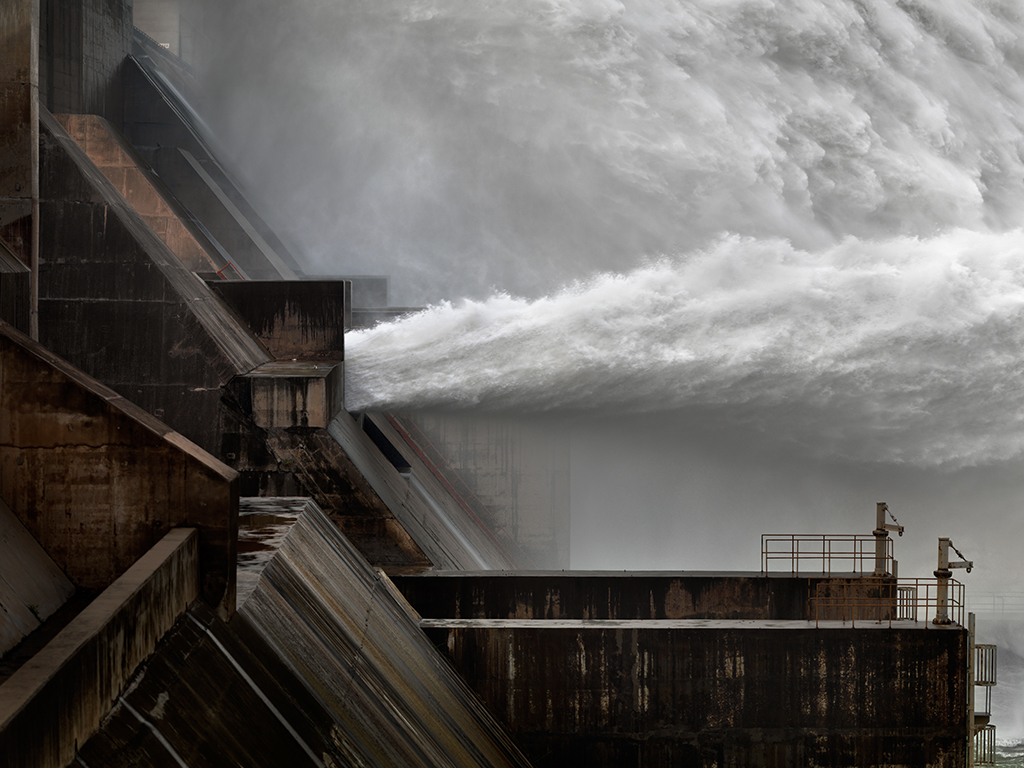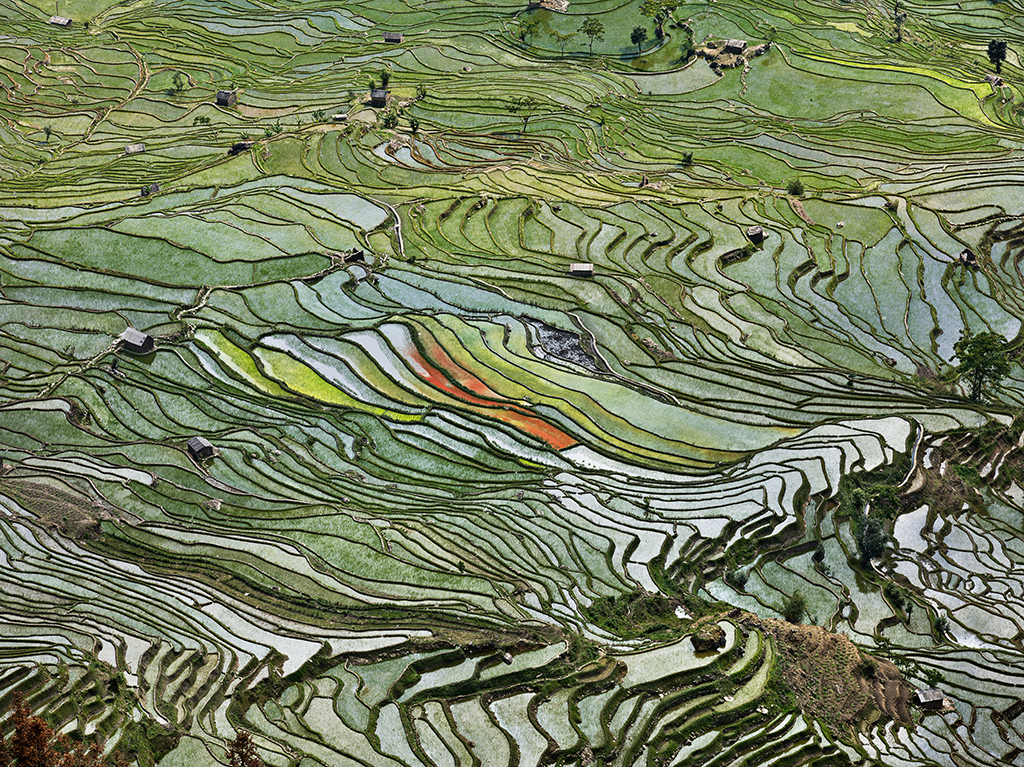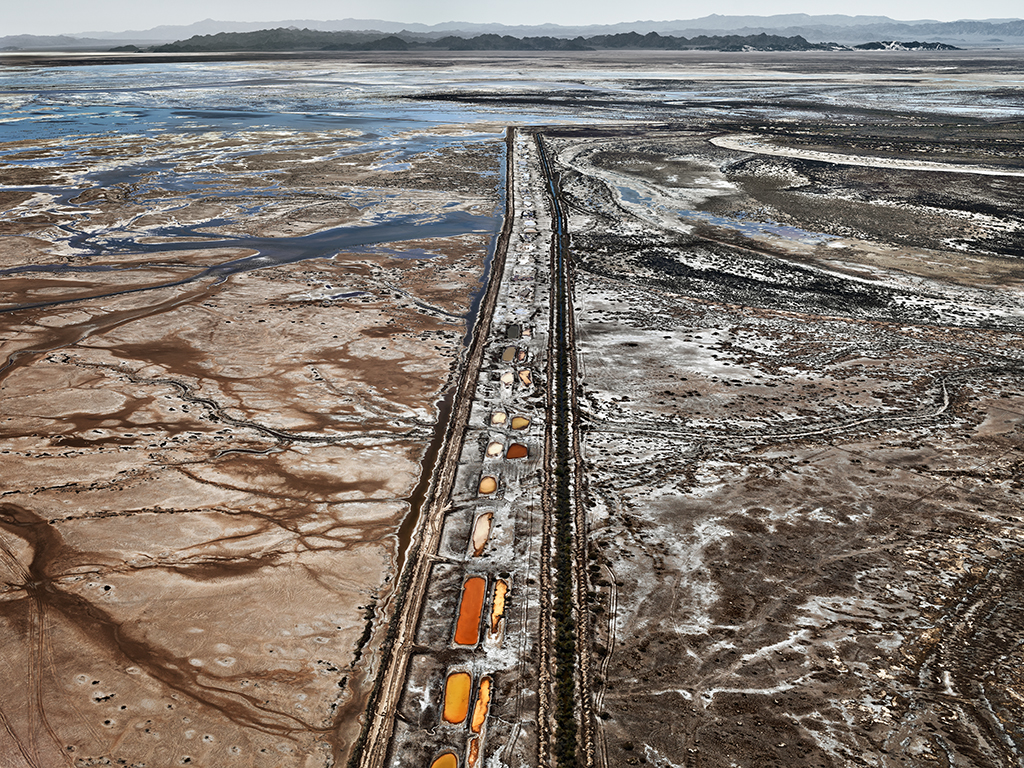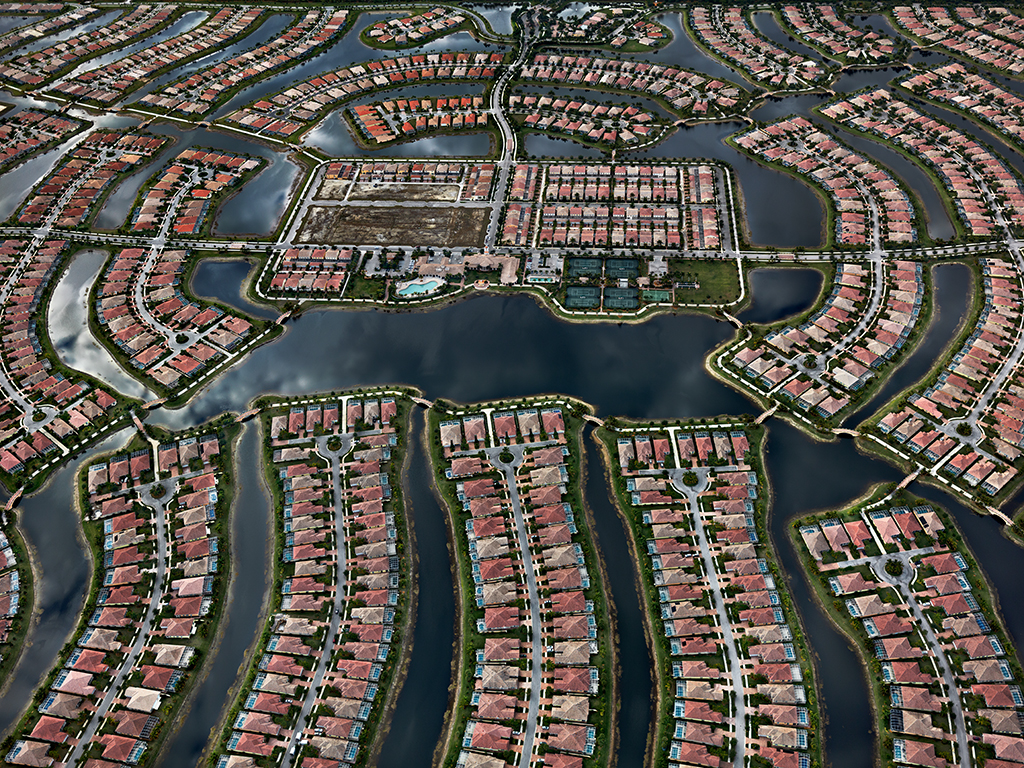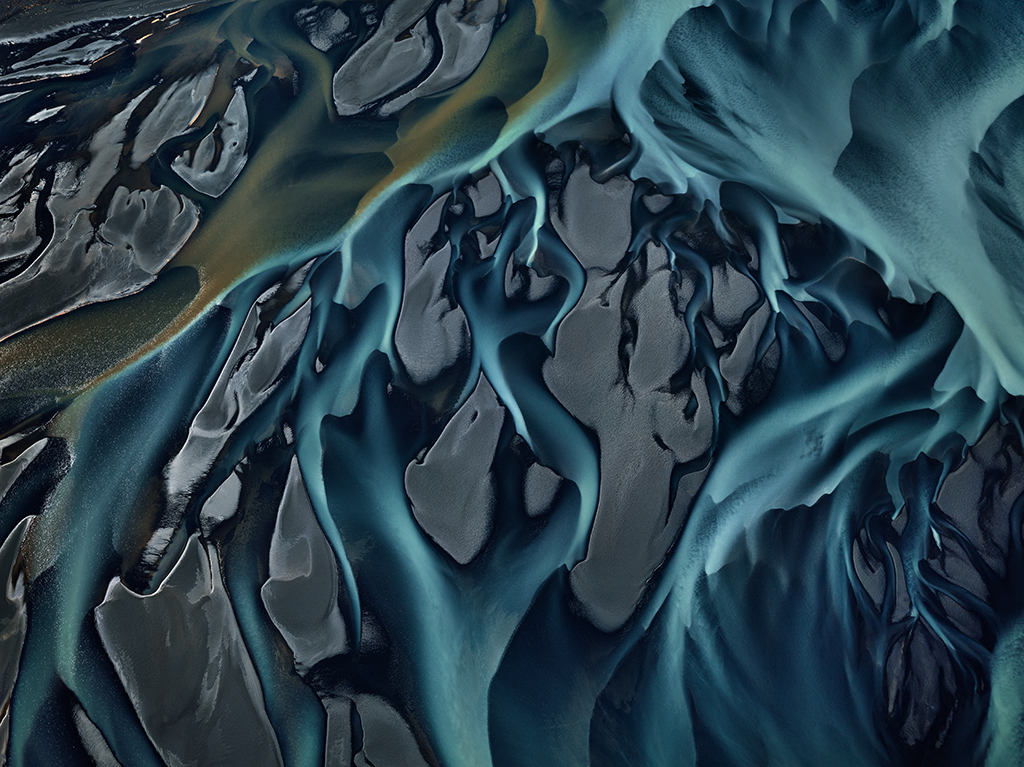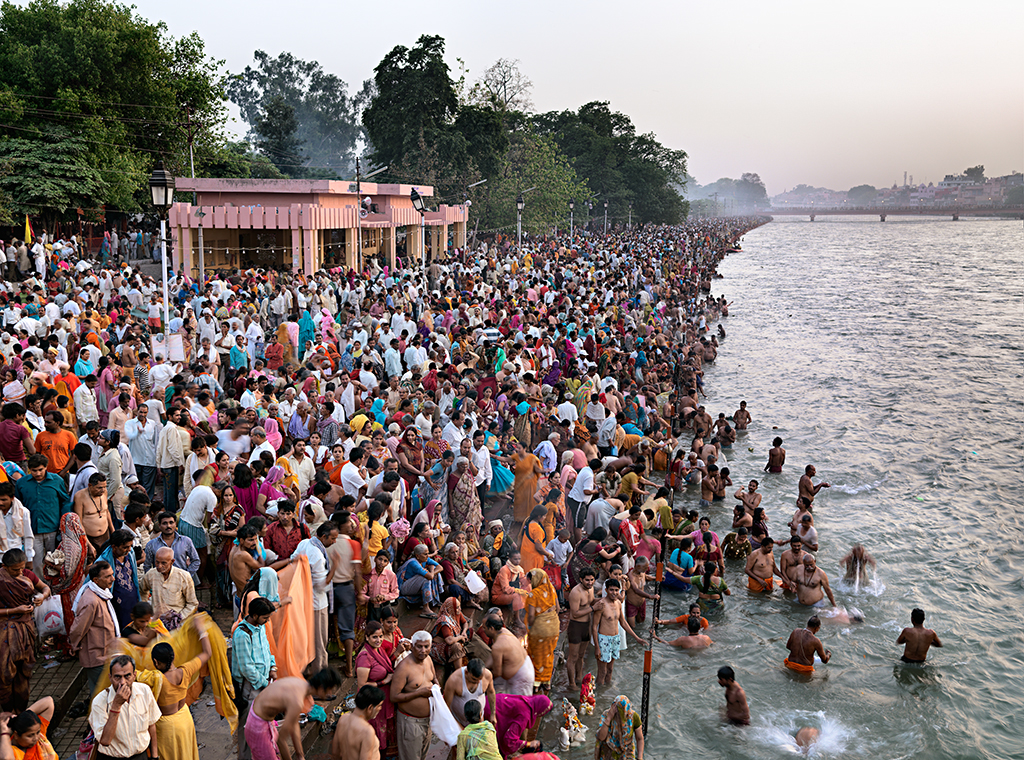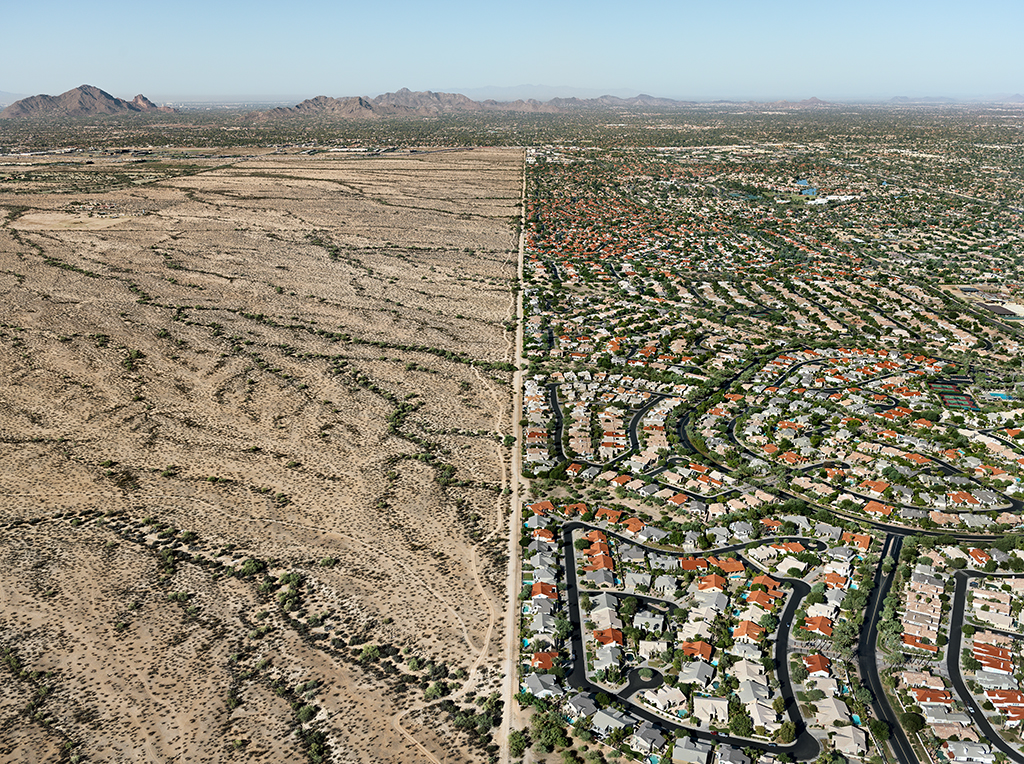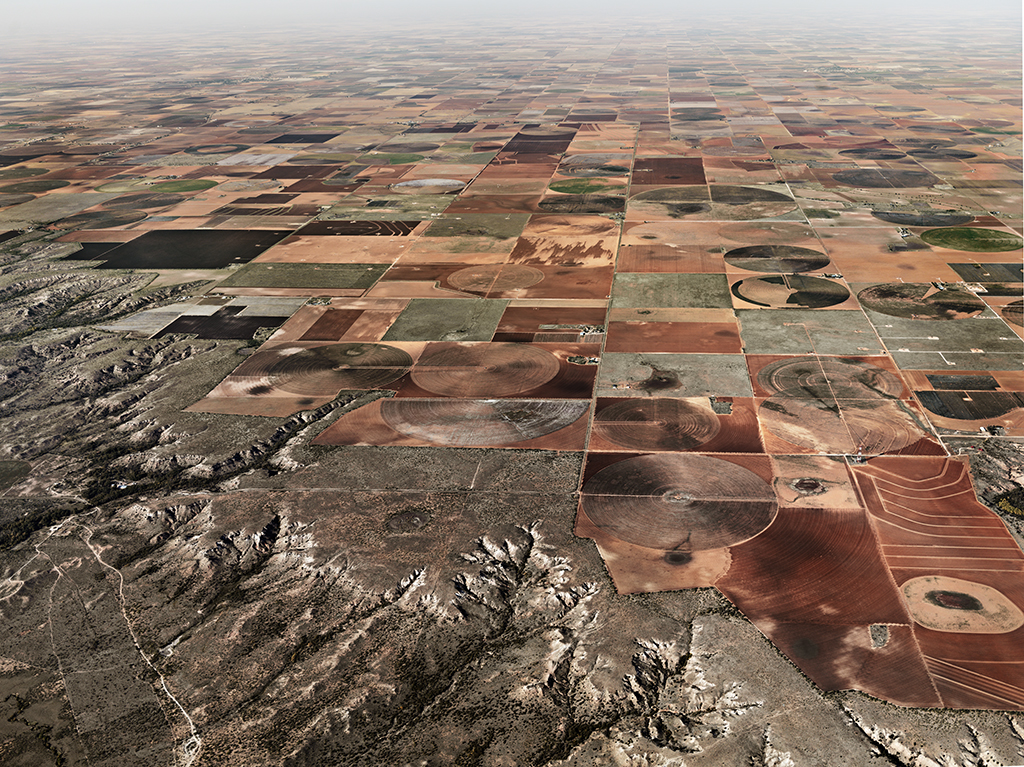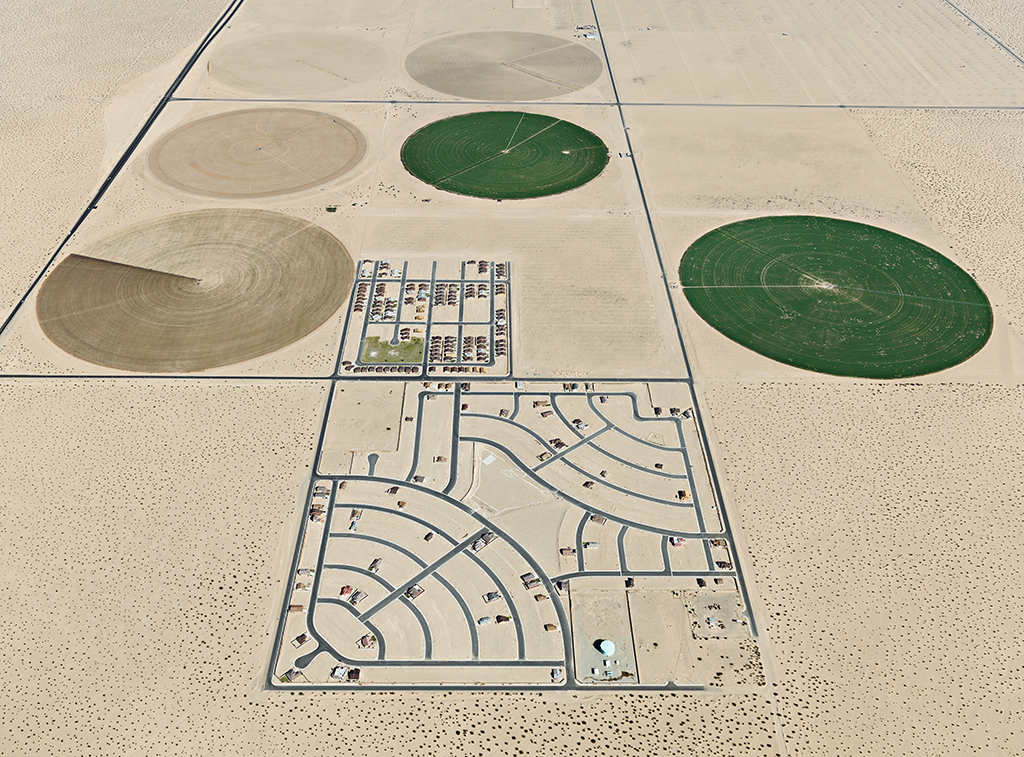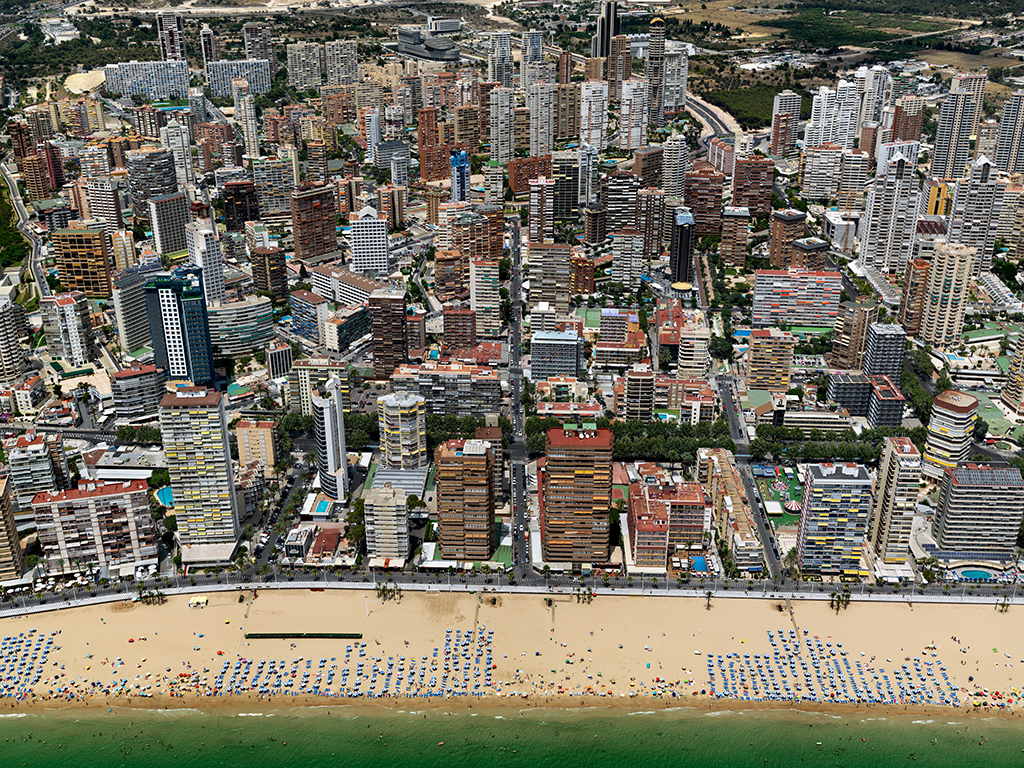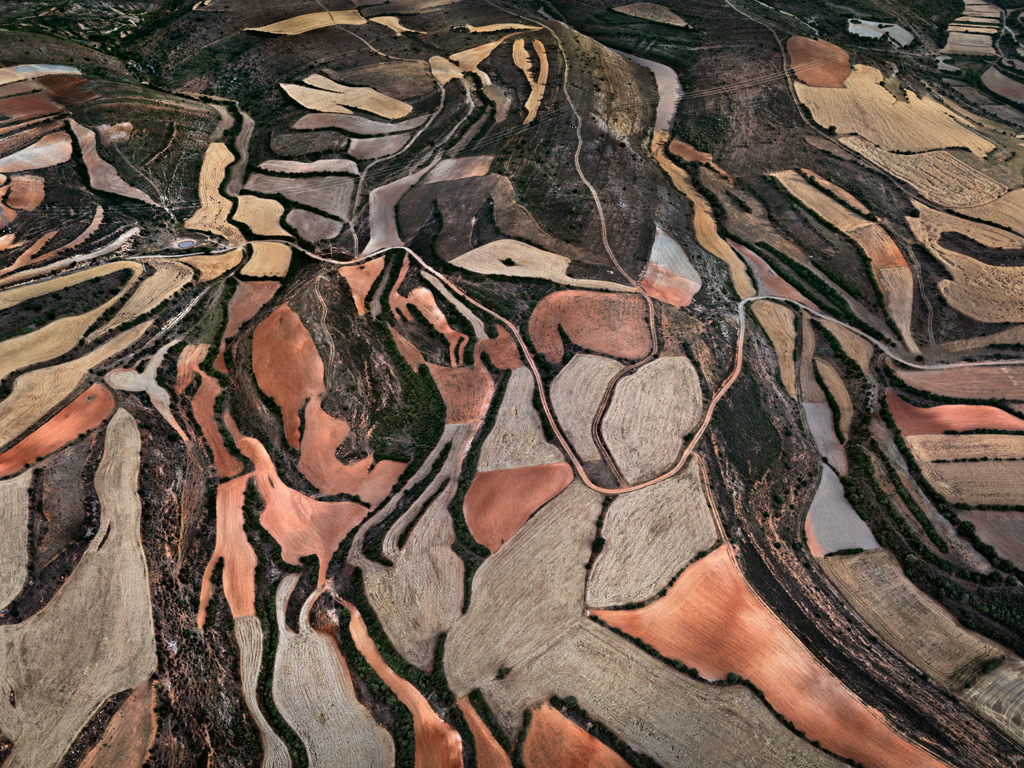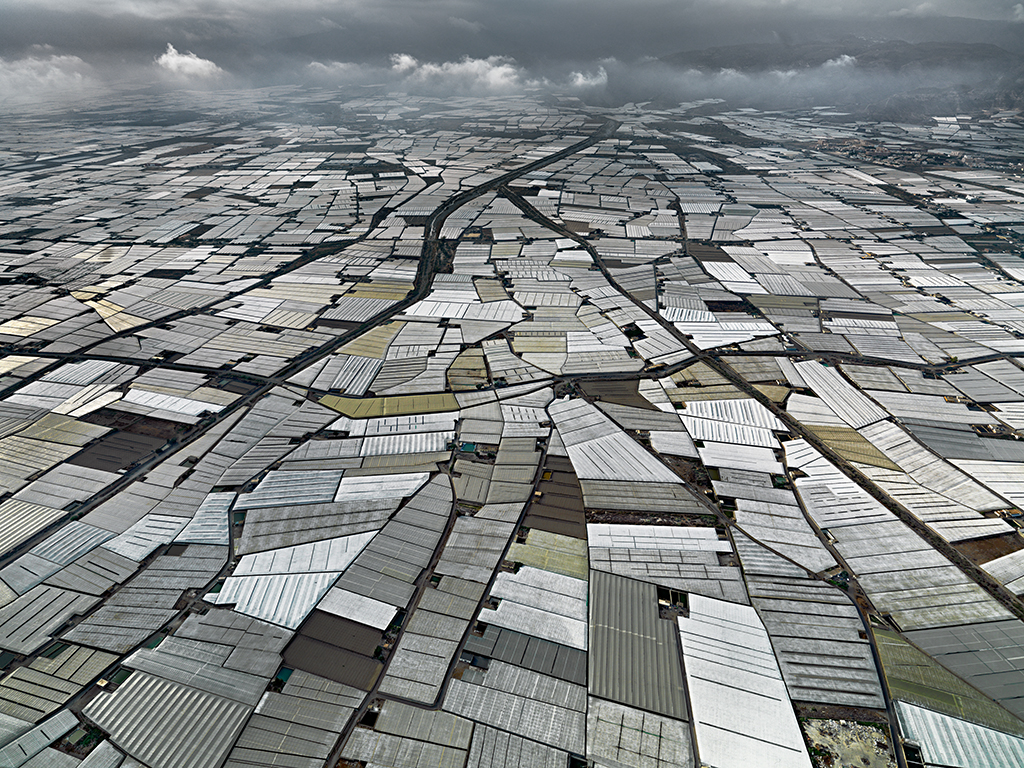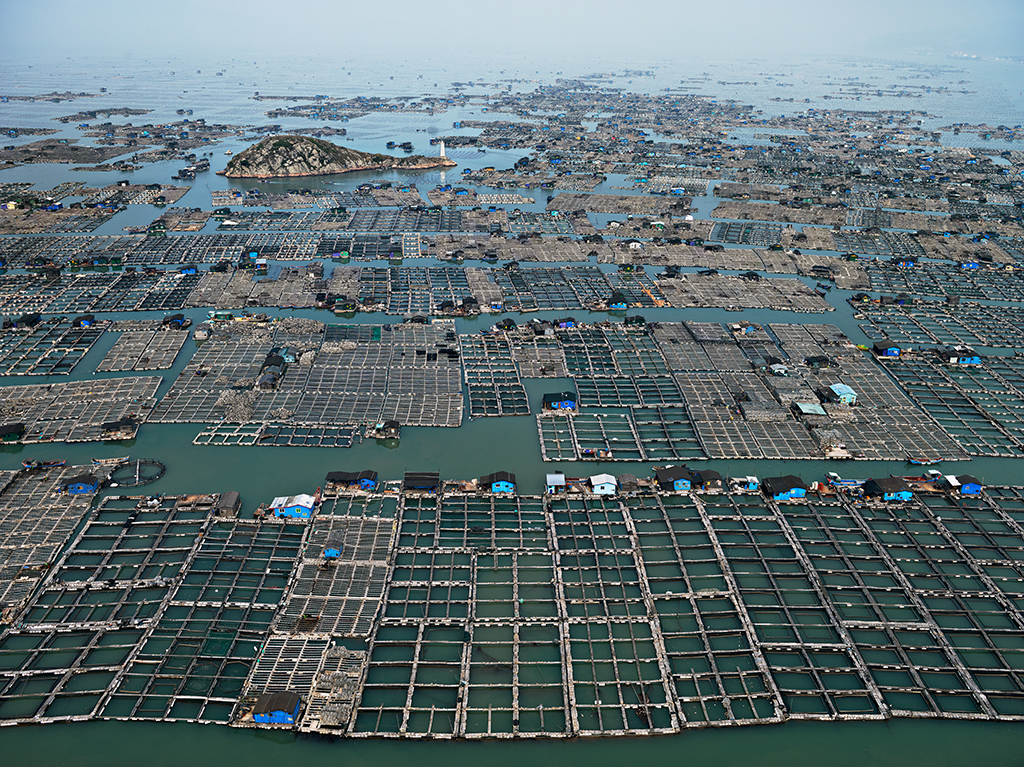Marine Aquaculture #1, Luoyuan Bay, Fujian Province, China 2012
In Edward Burtynsky’s Water series of aerial photographs, water is often eerily absent, but its power is visibly present and prescient. The series is broken up into the various states, uses, and crises of water that we encounter globally, ranging from the catastrophic oil spill in the “Gulf of Mexico,” to parched riverbeds and lakes in “Distress,” to the harnessing and diversion of water in “Control,” to its rampant industrial use in “Agriculture” and “Aquaculture.” “Source” concludes the series by capturing the only images of water in its natural state, undisturbed by human presence, and offers a glimpse into what’s at stake as water continues to shape not only human civilization but also perhaps its demise.
Burtynsky’s photographs inhabit a tight and uncomfortable space between awe-inspiring and terror striking. Observing what could pass for geometric abstraction or documentation of land art, it’s easy to loose sight of environmental calamity and the human dimension. But it is precisely through distance and scale that Burtynsky brings together those sites and sights that comprise what we recognize as “landscape.” Landscape, here, meaning not just the genre of art, but—more importantly—the medium of exchange through which we conceive and represent the physical environment and our relationship to it. A landscape is that which we see and the way in which we see it—a natural scene mediated by culture.
Burtynsky’s aerial views survey not only the effect our relationship with water has had on the environment, but also teach us to see it from this grand-scale perspective. These representations precede, in many ways, the materiality of the landscape on view. While they naturalize and aestheticize manmade disasters by portraying them as given and inevitable, these landscapes interpellate the viewer in a relationship to them, and challenge any easy consumption of these images. If it is said that there is an inherent “pleasure” to be found in terror, then what terror must lie herein.
Eriola Pira is an independent, contemporary art curator and writer. She is the Program Director of the Young Visual Artists Awards. Her Fulbright Fellowship research on contemporary art practices in post-socialist Albania led to her M.A. in Visual Culture Theory from New York University. She is currently researching and writing about fictional artists.


